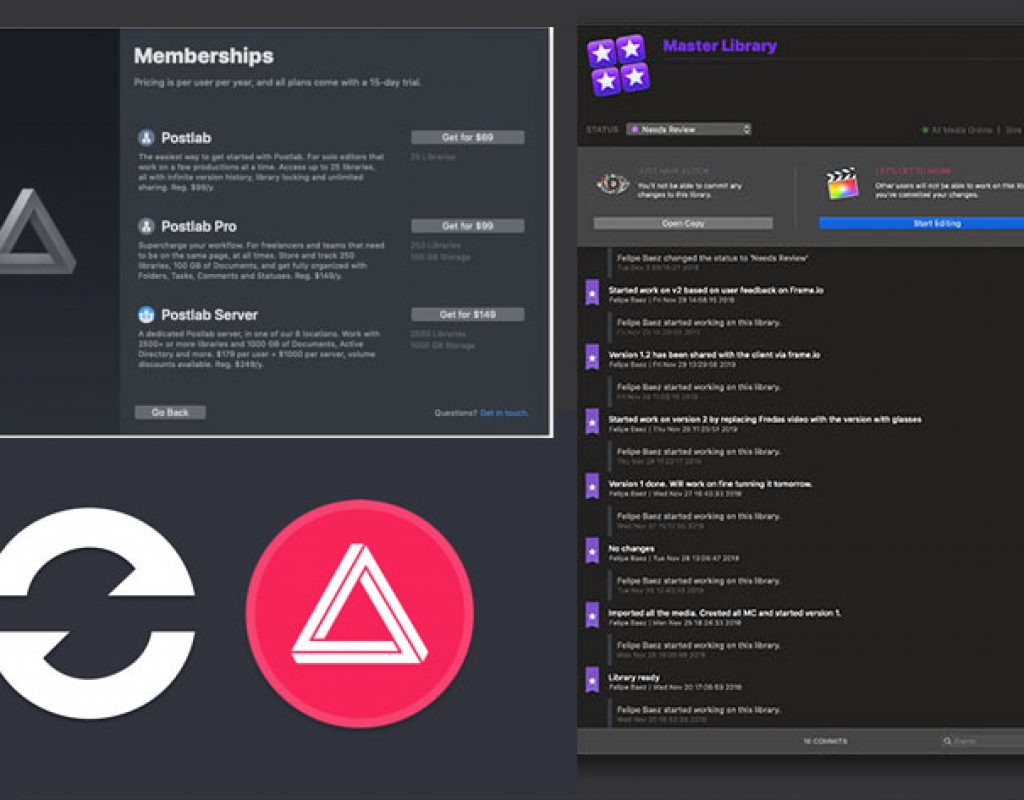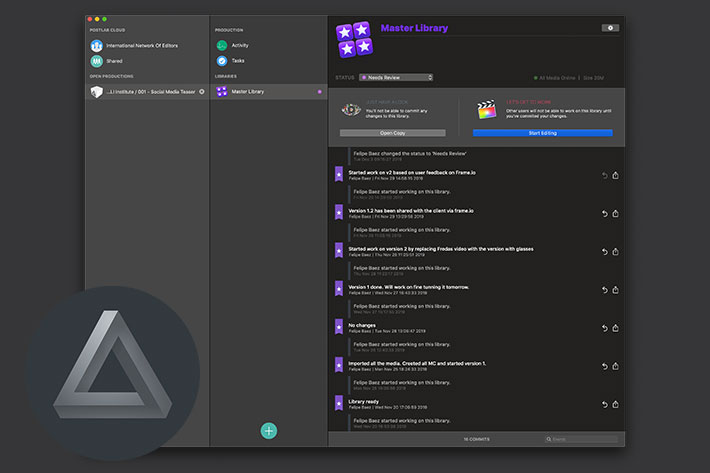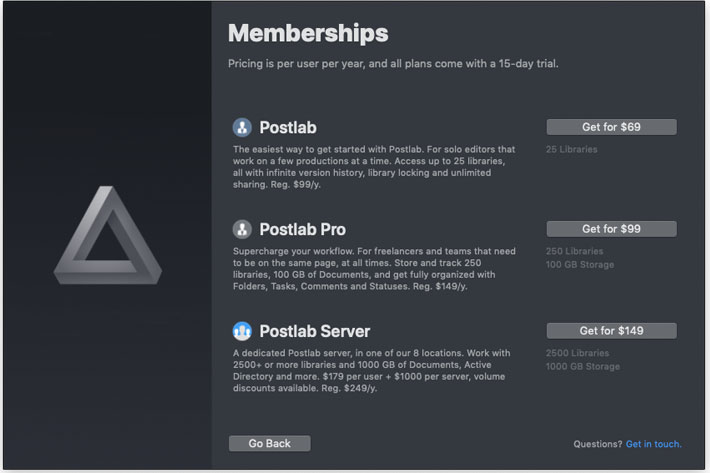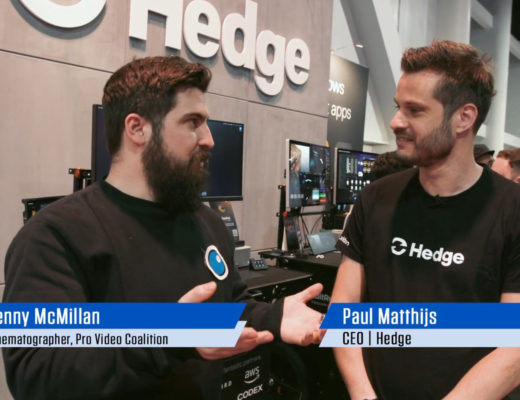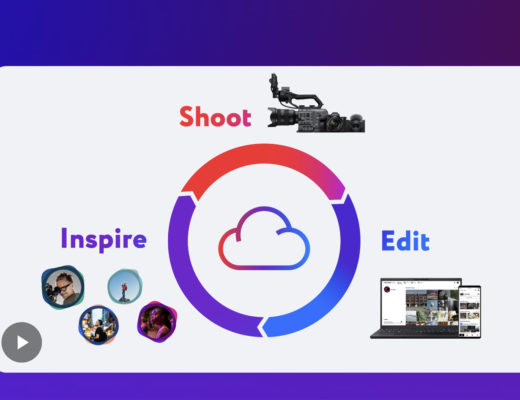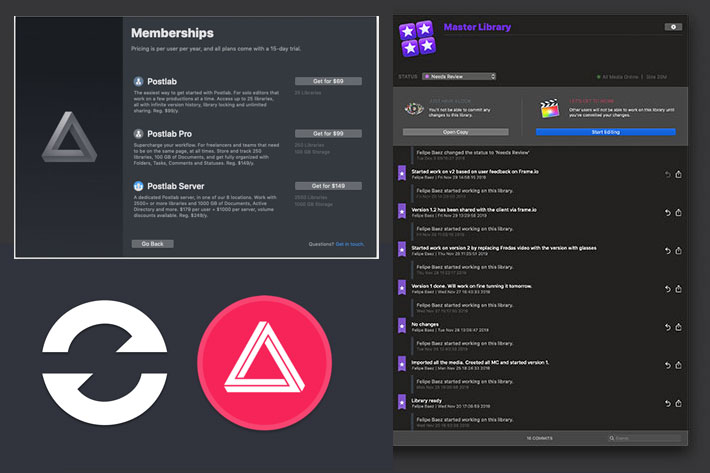
Postlab now comes in three flavors: Postlab, Postlab Pro, and Postlab Server. Postlab allows you to work on and track up to 25 libraries in as many productions as needed, and costs $99 per year/user.
Postlab is a Mac app that lets you collaborate on Final Cut Pro X libraries. Postlab enables FCPX users to share libraries, track and save changes, and make sure no more than one person is working on the same library simultaneously. In Postlab, libraries are part of a production. Productions can contain multiple libraries, but also related documents like stills, scripts, and graphics. Productions are shared with others, and they can be shared with as many people as needed.
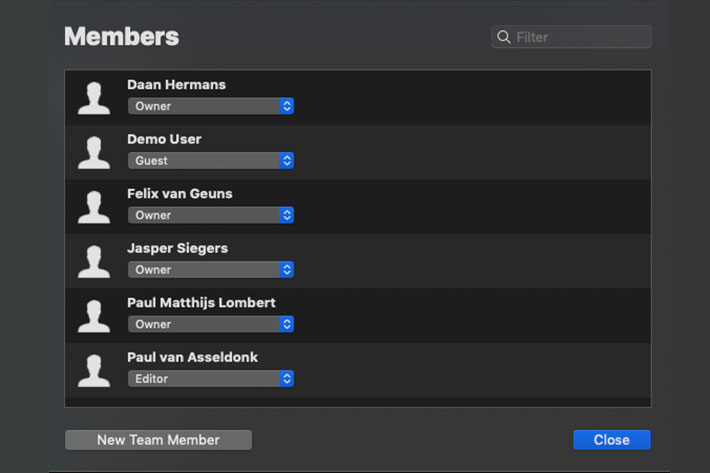
Libraries in a production are always tracked. According to Hedge, when a change is made (by saving the library in FCPX), Postlab detects what has changed, and saves those changes — while asking the user to describe what has been worked on. All changes are immediately available to all with whom the production is shared. When a library is opened by any of the collaborators, others are notified and are no longer able to open the same library, until it is closed again. This is like bin-locking but on a library level. It’s always possible to open a copy alongside a locked library.
Productions can also contain documents. Every production always has its fair share of static assets that do not need version tracking but are useful to keep close during editing. Graphics, stills, notes, everything goes — everything except media. Within a production, collaborators can set up and assign tasks, comment on changes, and set statuses on libraries. Productions can be sorted into folders, which allows a user not to share just multiple libraries, but multiple productions in one go. Revoking access to those productions is just as simple.
Final Cut Pro X now, other NLEs next
Postlab is currently focused on Final Cut Pro X, as, says Paul Matthijs, Hedge CEO, “it’s the only NLE that presently doesn’t offer any collaboration options at all. However, the technology that drives Postlab is built to work generic, and we expect to add support for other apps in the coming year. “
Postlab is an invention of Jasper Siegers, when working at EO, a major Dutch broadcaster. Postlab was an internal development project to help the editing team with managing FCPX productions. With the EO migrating to Avid, Jasper was looking for a way to continue working on Postlab. A new home, which he found at Hedge, when the company decided to buy Postlab, made it possible. As a result of the acquisition, both Jasper Siegers and Felipe Baez have joined the Hedge team.
“Together with Jasper and the four new team members that joined us for this, we’re going to make Postlab available to every editor in the world” Paul Matthijs told ProVideo Coalition, last April, after the acquisition. Jasper Siegers also said, then: “Over the last few years, Postlab has grown into a widely used platform, but I’ve never been able to really focus on it. Even with Felipe taking care of helping users out and creating tutorials, I’ve been wanting to be able to put all my energy into Postlab for quite a while now. Hedge makes it possible for me to do just that, and a lot more – they’ve built a full team around Postlab, taking my original vision to a whole new level.”
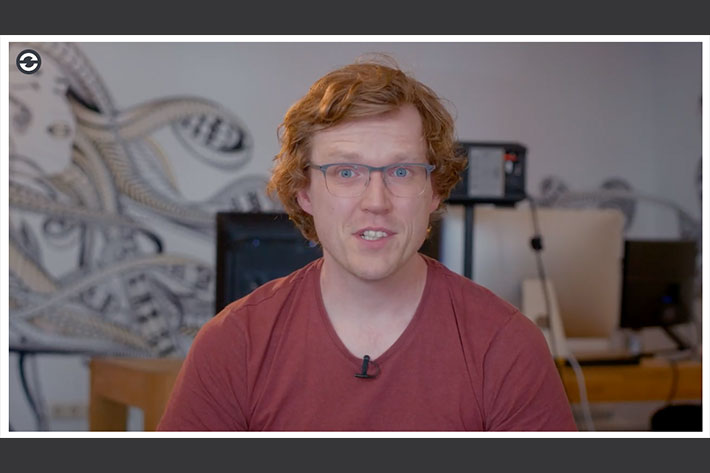
Postlab as a cloud service and desktop app
Postlab fills a void, added Paul Matthijs: “Since Hedge came to fruition, we’ve been making workflows a lot faster and easier. While backups are a logical starting point, it has never been our intention to stick just to backup software. Postlab is the perfect workflow simplifier that lives right between creating backups and archiving your media when done. The unobtrusiveness of Postlab and its lack of vendor lock-in perfectly align with our vision.”
The new Postlab is a cloud service, as the team behind the software announced, last April, it would be. It is also a desktop app, according to Hedge, because Postlab always works of a local copy, so just like when working without Postlab, there’s a full local copy of a production. If a production is not present on a computer, it’s first downloaded. With Postlab, a user never has to work directly in the cloud preventing speed issues. Postlab runs on a cloud purposely built for libraries — making sure they do not break, something that does happen with off-the-mill cloud storage.
When a library is shared, adds Hedge, “only the most recent version is downloaded on the receiving end, ensuring there is not a lot of traffic needed to get going. All collaborators do see a complete history for each production, so a previous version is within reach. This is a much more lean way of working with FCPX’s snapshot feature, as it doesn’t cause libraries to bloat.”
One app, three flavors
Postlab comes in three flavors: Postlab, Postlab Pro, and Postlab Server. Postlab allows you to work on and track up to 25 libraries in as many productions as needed and costs $99 per year per user. Hedge says that “every Postlab user can share libraries with as many users as needed. For many, that fits their workflow. However, for those that need to organize their post-production, there’s Postlab Pro.”
A Postlab Pro account ($149 per year) supports 250 libraries and comes with 100GB of document storage. It also adds a slew of organizational tools like folder sharing, comments, tasks, and statuses. Pro is aimed at freelancers that often collaborate and at teams. Multi-user and temp accounts are available.
For larger teams, or teams that require IT-focused features like Active Directory and Single Sign On, there’s Postlab Server — a dedicated cloud server with room for 2500+ libraries, 1 TB of documents and granular access management. Postlab Server is $249 per user per year, plus a maintenance fee of $1000 per server instance.
Until the end of the year, there’s a 30% discount available on Postlab. Visit Hedge for more information.

Filmtools
Filmmakers go-to destination for pre-production, production & post production equipment!
Shop Now